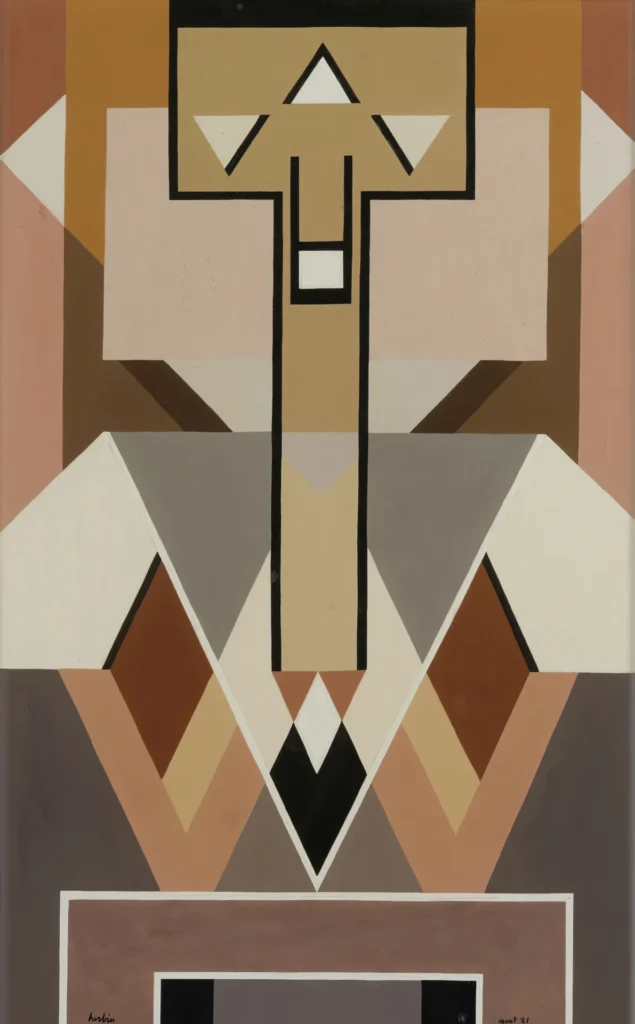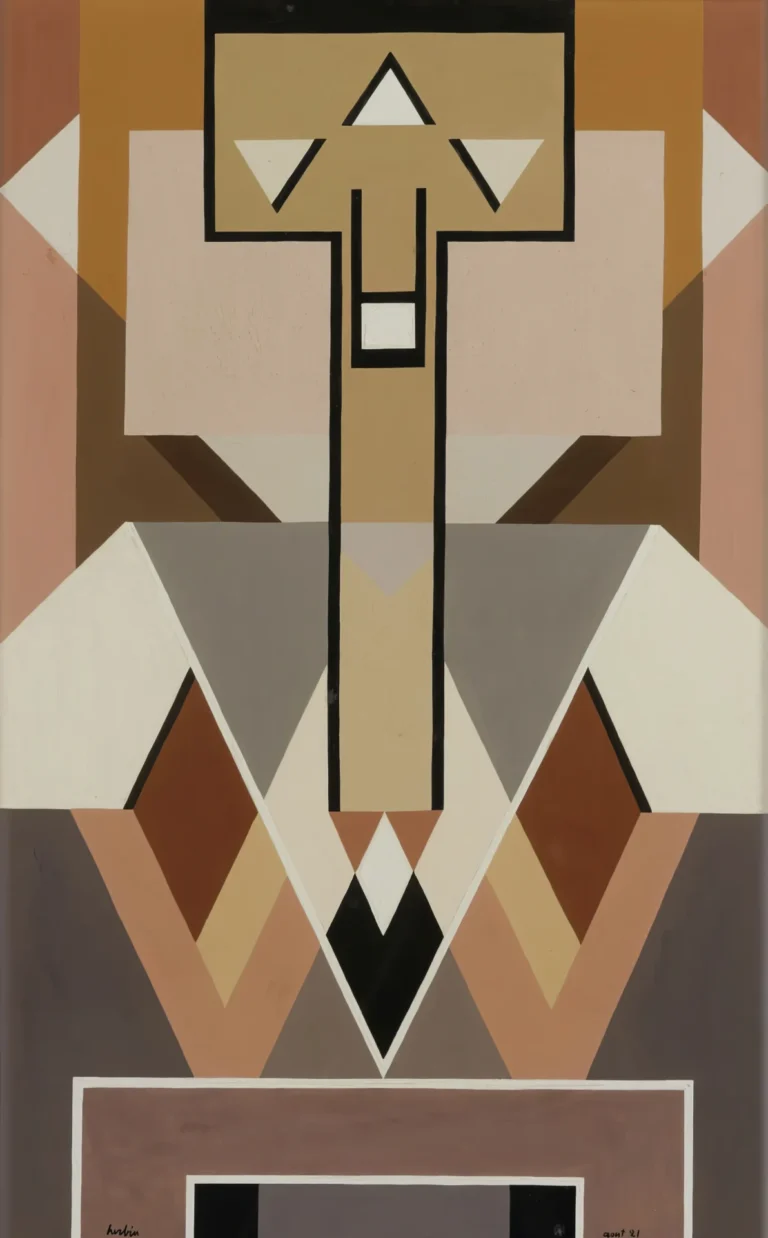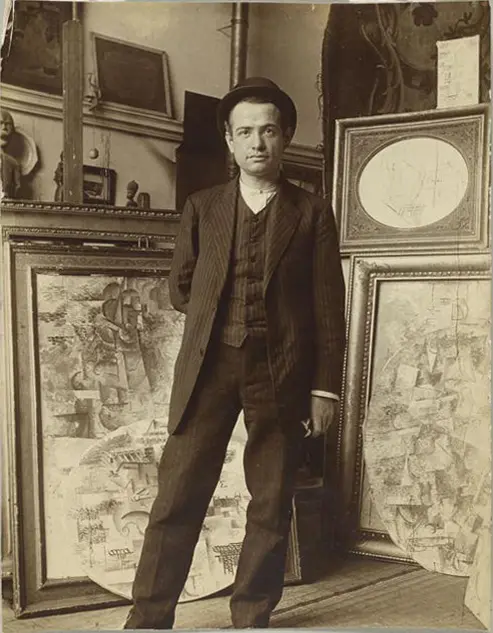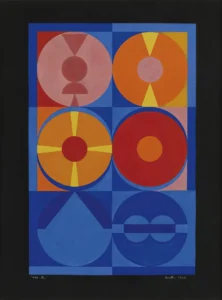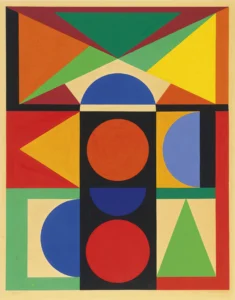Composition Symétrique I (1921)
This artwork, 'Composition symétriqueI,' showcases the innovative style of French artist Auguste Herbin, who was pivotal in the development of geometric abstraction during the early 20th century. Created in June 1921, the piece exemplifies Herbin's mastery of symmetry and geometric forms, encapsulating the essence of modern artistic movements such as Cubism. The use of gouache on paper adds a vibrant quality to its intricate design, asserting Herbin's unique vision within the broader context of contemporary art history.
June 1921
About the Artwork
Auguste Herbin, born in 1882, was deeply influenced by the emerging trends of abstraction in his time. 'Composition symétrique I' reflects his fascination with geometric forms and symmetry, which he believed could convey deeper emotional and philosophical meanings. This piece was created during a pivotal era in art, where traditional representations were being radically transformed. Herbin's dedication to exploring visual harmony through geometric shapes allowed him to carve a niche in the art world, making significant contributions alongside contemporaries who challenged conventional aesthetics.
Did You Know
Liked what you see? Add it to your collection.
Enjoyed reading? Share it.
Related Artworks
... continued
Medium
The artwork is executed in gouache on paper.
Size
There are slight variations in the reported dimensions, but the most consistent measurements are: 40.4 x 30.1 cm (15.9 x 11.9 in). Some sources also mention dimensions such as 40 x 30.5 cm and 48 x 30.9 cm, though these may be less accurate or from different sources.
Artist
Auguste Herbin was a French artist, born in 1882 and deceased in 1960. He was known for his contributions to geometric abstraction and Cubism.
Style and Period
The work is from Herbin's period of geometric abstraction, reflecting his interest in symmetry and geometric forms during the early 20th century.




